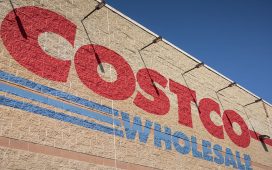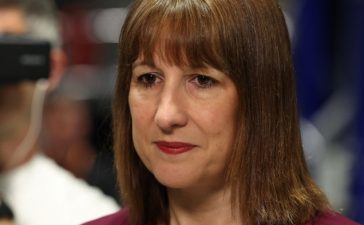If you’re a regular at specialist coffee shops in the UK – the kind where baristas carefully weigh out your grounds on tiny hypersensitive scales and practically frogmarch you from the premises if you order syrup – you may have noticed that americanos have fallen out of favour. In these fancier coffee spots, everyone’s dependable, unfussy go-to is being eclipsed by a newer import from Australia and New Zealand: the long black.
Conducting an unofficial survey of coffee spots, I noticed nearly every barista had a slightly different explanation of the drink. “It’s basically exactly the same as an americano,” one whispered conspiratorially. “It’s a shorter black coffee, the same size as a flat white,” explained another. The final barista I spoke to just shook her head in quiet disappointment when I asked if long black was just a more pretentious way of asking for an americano.
What is the difference between a long black and an americano? Last year, 2.1 million people watched a viral Instagram reel from the coffee shop Tamp, in Chiswick, west London, which asked that exact question.
Despite its name, a long black is shorter than an americano, but some baristas also swear by adding the espresso second, on top of the hot water. This ensures that “the hot water is slightly cooler in the cup and closer in temperature to the espresso that’s coming out of the machine”, explains Ollie Simon, of the New Zealand-founded speciality roaster Allpress. “If you’re pouring hot water straight on to espresso, you’re agitating the drink, and losing some of the more volatile aromas and flavours.”
Leeds speciality coffee shop Laynes also adds the espresso second. “It’s a faster way to do it, and espresso is meant to be quick,” says owner Dave Olejnik. “When you wallop a load of hot water on to an espresso, you also start to break down some of the structure, texture, and the crema, which sits across the top. Honestly, you just get a better-looking drink if you brew coffee into water.”
Sales of the long black have been steadily rising in the UK. In 2023, according to one small survey, it was London’s fifth most popular coffee order, and accounted for 9% of all sales in the capital. Kaffeine, in Soho, has been selling long blacks since it opened in 2009. Owner Peter Dore-Smith was born in Melbourne, but is a long-term Londoner. Along with nearby Flat White (founded by Australians and New Zealanders, and widely credited with first popularising flat whites in the UK), his shop is a key fixture in London’s antipodean coffee scene. He also reckons that he was among the very first people to sell long blacks in London. “I should open a shop called Long Black, shouldn’t I?” he laughs. “That’s what everyone comes here for.”
Dore-Smith ushers me behind the bar to watch Katarina, one of his senior baristas, in action. She uses an upturned espresso mug to bring everything nearer to the spout, and brews into a 5oz cup with hot water: the same size you would typically use for a flat white. Aside from size, most of these things don’t have much effect on taste, she explains, but it all helps to make your cuppa look nicer at the end. This is important when you don’t have the canvas of flashy latte art to play with.
“You’ll see there’s quite a remarkable difference in the flavour profile,” Dore-Smith says. He’s right; with a long black, the flavour of the beans is clearer and much more vibrant, with notes of blackberry, caramel and nuttiness all coming through. In comparison, the americano feels weak and watery. I’m sold.
“Everybody is basically like: whoa, that’s so much better,” Dore-Smith says. “I’ve noticed, working behind the bar, that the long black is increasing in popularity, and it’s much more prevalent.” Sales of the drink at Kaffeine crept up by 4% from November to mid-January, while black coffee in general is also proving more popular.
“I’d liken it to people moving from big lattes down to flat whites,” says Olejnik. “Moving from big americanos down to long blacks feels like a mirror movement, if you like.”
Like the flat white, the long black originated in Australia or New Zealand, depending on who you ask. The two countries are renowned for their high-quality brews; if a spot is owned by an Australian or a New Zealander, it’s usually a pretty solid indicator that the coffee will be on point.
Dore-Smith attributes the influence of Australian coffee to the wave of Italians who immigrated to Australia in the 1950s and 60s and brought their knowledge of espresso-brewing with them. He also thinks the country’s geography and “very strong anti-drink-driving culture” play their part. “If you want to go out and meet a mate in London, you go to the pub, have a few pints and get the train home,” he says. But in many parts of Australia with poorer public transport, “you have to drive home,” he says. “So you go out and get a really good cup of coffee instead.”
New Zealanders think along the same lines. “Public transport is not a big thing, so you catch up over coffee rather than a pint,” says Simon, who is originally from Auckland. He also offers up the theory that the coffee scene in the two countries has developed in relative isolation. “I don’t want to say it evolved in a bubble, but being so far away, it has kind of done its own thing.”
“They’re far less influenced by what I would consider American cafe culture,” says Olejnik, “the Starbucks-ification of coffee, and putting a huge drink in your hand with a great big comfy sofa. That culture didn’t land down there in quite the same way.” Instead, it’s about “fine-tuning the original Italian espresso bar menu, and the notion that there’s value in high quality, as opposed to high quantity,” he says. “It has had huge implications for global coffee-drinking culture.”
As Aussie and New Zealand coffee creeps on to more menus in the UK, will the long black start to become as popular as the flat white? The drink is yet to break into any of the UK’s major high street coffee chains. In 2010, Costa became the first high street chain to introduce the flat white to its menu; it is now one of the brand’s most popular orders. Still, it has no plans to introduce long blacks, a spokesperson confirmed. So the antipodeans have not yet staged a complete coup – but if you’re a seasoned americano drinker, you might consider switching your order up.









